Your glutes are an incredibly important muscle group for many reasons, including preventing injury, improving performance, and helping you fit nicely into your jeans.
This is why I want to show you some of the best exercises you can do to get your glutes properly fired up and working for you. These will help you move better, feel better, and kick your training up a notch.
RELATED: The Best Leg Workouts
Glute bridge
Most People Can’t Properly Fire Their Glutes
Almost every one of the people I see in my clinic has at least one muscle group that isn’t functioning properly. Very often, one of these muscle groups is the glutes.
Many of these people can’t even properly fire their glutes without first undergoing some teaching or activation, on one or both sides.
“Even when people train hard every day, if they spend the majority of the remainder of the day sitting down, then they are simply not using their glutes.
And I’m not talking your average desk-worker who exercises once in a while. I’m talking your five-times-a-week fitness enthusiasts, your elite-level athletes, your weekend warriors, and their sedentary friends alike.
Why Are the Glutes So Inactive?
There are many potential reasons, but I am going to keep it simple and give you just two. The first and most common reason people suffer from underactive glutes or “glute amnesia” is due to lifestyle.
Even when people train hard every day, if they spend the majority of the remainder of the day sitting down, then they are simply not using their glutes.
RELATED: The Butt of a Backbend: A Lesson in Gluteal Anatomy
And remember the old saying – if you don’t use it, you lose it. Unfortunately, this is just what happens with your glutes.
Another common reason I see glutes that aren’t working properly is due to injury. Often an injury happens that changes the mechanics and motor programming of a person’s body.
This can lead to some muscle groups becoming overactive, while others become underactive (think: compensation). This can alter things for a long time without the person even knowing it.
RELATED: Glute Activation Warm Up for Squats and Deadlifts (Video)
Enter Glute Activation
Simply put, glute activation is waking up your glutes. It makes the connection from your brain to your muscle and gets the muscle fired up and ready to do some work.
Glute activation should be done prior to your workout, but it can also be done as an active rest between sets. And trust me when I say that doing some glute activation prior to your squats, lunges, and deadlifts will result in an excellent glute workout!
“Simply put, glute activation is waking up your glutes. It makes the connection from your brain to your muscle and gets the muscle fired up and ready to do some work.”
So, how do you go about activating them prior to your workout for the best results? Check out these four awesome glute activation exercises I regularly use with my athletes.
The Modified Clamshell
I’m sure you’ve seen the clamshell before. It is a fan-fave when it comes to glute activation and glute med strengthening. However, at our studio we don’t love how this movement is typically taught.
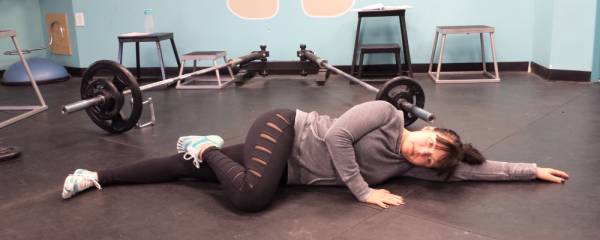
Modified clamshell – top knee on the ground
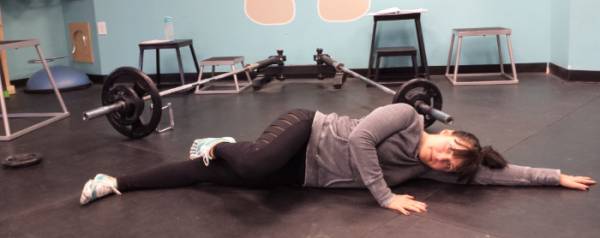
Modified clamshell – top knee off the ground
We’ve found the traditional way the clamshell is taught ends up leading to the athletes overusing their hip flexors and not feeling the exercise where they should.
In other words, it usually just cements in already poor movement patterns. This is why we always teach a modified version.
To do this modified clamshell:
- Lie on your side with your head resting comfortably.
- Your bottom leg should be straight, with your top hip bent up to ninety degrees and your top foot resting behind your bottom knee. Your hips should be forward, and should remain in this forward position throughout the entire movement to come.
- Squeeze your glutes and lift your knee off the ground, keeping your top foot rested on your bottom knee (make sure your hips don’t roll back because they most certainly will try to do so).
- You should feel this exercise approximately where your jeans pocket would be. If you feel it here, you’re doing it right!
“We’ve found the traditional way the clamshell is taught ends up leading to the athletes overusing their hip flexors and not feeling the exercise where they should.”
The Glute Bridge
This is a great, functional exercise, and one I have written about in the past. The basic glute bridge is simple, just lay on your back with your knees bent, lifting your hips in the air.
This is an excellent starting point, but most of you will quickly need to move on to more challenging variations to really get your glutes fired up. Check out my two favorites:
The Cook Bridge/Cook Hip Lift – Developed by physical therapist Gray Cook, this exercise eliminates lumbar spine movement, forcing the work to happen at the glutes. To do this movement:
- Get into the bridge position.
- Place a tennis ball below your bottom rib on one side, and hug the same knee to your chest, pinning the ball down with your thigh.
- Holding onto this position, lift your hips in the air, and repeat. You’ve just done the Cook Bridge!
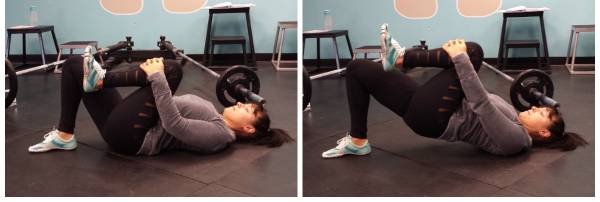
Cook bridge
Glute Bridge With March – This one forces you to engage all of your stabilizer muscles. To do the glute bridge with march:
- Get in to the bridge position and lift your hips in the air.
- At this top position, and without allowing any movement at your hips, slowly lift one leg off the ground and hold for two seconds.
- Put it down and lift the opposite leg.
- Repeat this about twenty times, ensuring your hips remain stable throughout the entire exercise.
RELATED: The 4 Most Important Exercises You’re Probably Not Doing
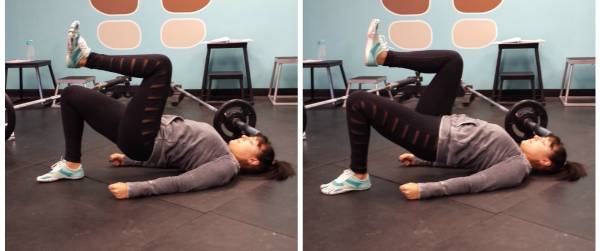
Glute bridge with march
Mini Band Walks
Mini bands are becoming more popular and with good reason. They are a great way to get the glutes geared up for a workout. The best way to do them?
Put the mini band around your feet – yes, your feet – and walk laterally, trying to move your upper body as little as possible. This is usually a pretty fail-safe way of getting a burn in that pocket muscle.
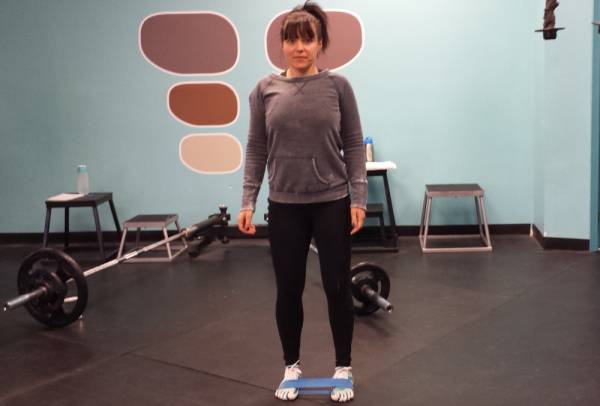
Mini band walks
Slider Reverse Lunge
The slider reverse lunge is simple to perform and doesn’t need much in the way of instructions. Simply grab a Valslide, or a similar tool that will allow you to move smoothly across the ground.
Put the slide under one foot, and use that foot to slide into a reverse lunge, and then return to standing. Try doing this exercise after one of the ones above, and just wait until you feel the burn!
RELATED: Product Review: The Valslide
Slider reverse lunge
Give Them a Go
There it is. Four of my best and all-time favorite glute-activation exercises. Give them a try before your normal workout and trust me when I say you will feel it tomorrow!
Photo 2 courtesy of Shutterstock.






